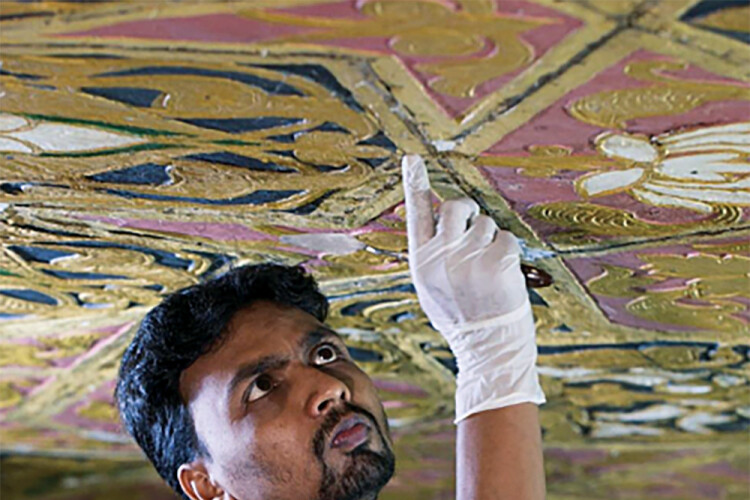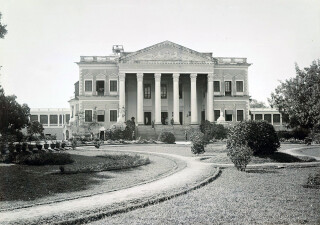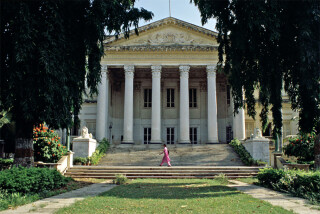India – the world’s largest democracy and one of the fastest-growing economies in the developing world – might have shaken off its old allegiances to the British who ruled there for much of the 19th and 20th centuries. But in almost every major Indian city there remain numerous architectural reminders of the old colonial rulers.
These old buildings are now a valued part of India’s built heritage and efforts are being made to restore and preserve them.
Earlier this year, trainees working on a new Commonwealth heritage conservation programme completed one such restoration: that of an historic palace in the city of Hyderabad.
After years of restoration work, the former British Residency – now part of the Osmania Women’s University College – is the first project to be completed under a new £4.5million programme.
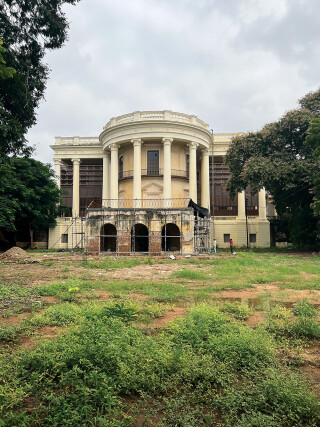
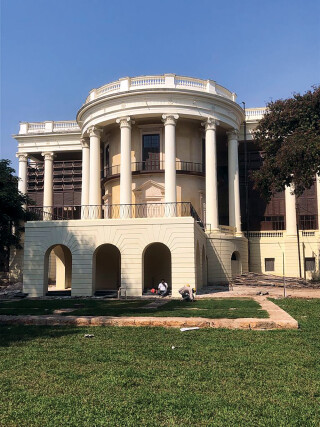
The building was originally the residence of Colonel James Achilles Kirkpatrick, the British representative to the court at Hyderabad from 1797 to 1805, and was later converted into a university.
The 216-year-old building has been undergoing piecemeal restoration for almost 20 years. Heavy local traffic, poor maintenance and faulty repairs had left the building in acute disrepair.
In 2002 the World Monuments Fund (WMF), which champions heritage places in critical need of protection, added the building to its watch-list and launched a programme of works to repair it.
The building has now been restored thanks to years of painstaking conservation work by WMF and a partnership of international and local charities and private donors.
The final phase of the building’s restoration was completed by a team of trainees provided under the Queen Elizabeth II Platinum Jubilee Commonwealth Heritage Skills training programme, which was launched in May 2022.
The programme, funded by the UK-based charity Hamish Ogston Foundation, contributed £157,000 towards the project and also gave youngsters from the UK and Hyderabad a chance to work on the building and learn conservation techniques from experts.
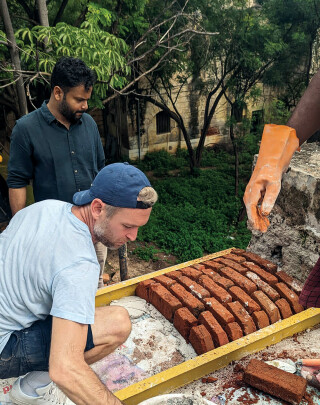
Over the next five years the programme, which is managed by the Commonwealth Heritage Forum, will train more than 500 people from disadvantaged communities in a wide range of skills, from stonemasonry and joinery to mud brick and thatch, helping to revive traditional crafts and skills to deliver jobs and life-changing opportunities throughout the Commonwealth.
Sixteen young trainees from the UK and Hyderabad worked on the restoration project, learning practical conservation skills such as slaking lime for re-plastering the South Porch.
Sessions on jack-arch roof construction were followed by practical reconstruction work on the Lansdowne Gate – one of the three monumental historic gateways at the entrance to the Residency’s grounds.
The trainees, the majority of them women, received instruction from leading architects and heritage professionals to help them develop the skills required in heritage conservation and management.
The restored building is now part of the Osmania Women’s University College campus where every year more than 2,500 women are educated at undergraduate, postgraduate, diploma and certificate levels in science, commerce and arts subjects. Engineering courses are planned for the future.
The restored building will provide additional facilities for the university. Green space has been created on either side of the central mall for recreation, and other areas of the university campus widely used by students and staff have also been improved.
British businessman and philanthropist Hamish Ogston, the man whose foundation is funding the heritage skills training programme, says that completion of the British Residency project marks a major milestone.
“Our first Hyderabad project shows what Commonwealth citizens can achieve together and what the benefit to local communities can be, in this case literally, carved out of our shared Commonwealth heritage,” says Ogston.
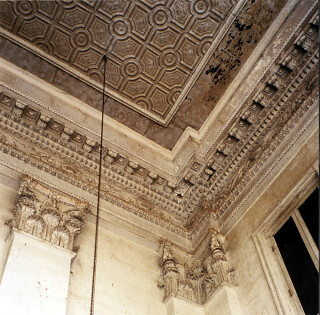
“This programme is securing the heritage champions of the future by building local skills capacity and creating jobs for life. I look forward to the next phase of our programme starting in Barbados, so we can continue to make a meaningful difference to more people around the Commonwealth.”
Philip Davies, founder and consultant executive director of the Commonwealth Heritage Forum, says: “The former British Residency is one of the most spectacular European historic buildings in India; an outstanding example of what is a truly shared heritage – designed by a British military engineer but constructed by local craftsmen.

“For over 50 years it has been slowly decaying. To see it finally restored to its former glory and used as test bed for heritage skills training for both local and international trainees is exactly in line with the mission of the Commonwealth Heritage Forum and our Commonwealth Heritage Skills programme.
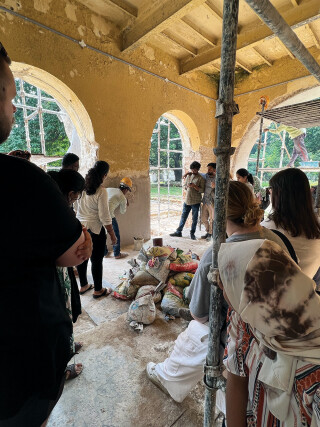
“This is just the first of many similar projects we envisage across the globe working in conjunction with international and local partners to conserve and adapt the heritage that local people value.”
The next heritage conservation project under the Queen Elizabeth II Platinum Jubilee Commonwealth Heritage training programme has just begun in Barbados. Six UK-based trainees have joined with a dozen participants from Tulane University and trainees from the University of the West Indies to develop a conservation management plan for Roebuck Street at the heart of the Bridgetown World Heritage site.
Using drones, LiDAR, and 3D scanning, trainees will map the 650-metre historic street whilst developing partnerships with local stakeholders and heritage groups.
In India, the next heritage conservation project will be the Roxburgh House Herbarium and Botanic Garden in Kolkata (Calcutta), where funds provided by the Hamish Ogston Foundation have just arrived for the first stage of the project.
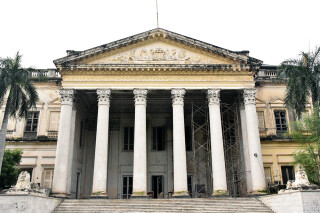
Kirkpatrick’s legacy
The original inhabitant of the residency in Hyderabad was Colonel James Achilles Kirkpatrick, the British representative to the court at Hyderabad from 1797 until 1805.
Kirkpatrick commissioned the building from Lt Samuel Russell of the Madras Engineers during a period of critical economic and military importance for Hyderabad. The building’s construction was financed by the sovereign of the state.
Kirkpatrick was a controversial character for his time: a convert to Islam who married a Mughal woman named Khair-un-Nissa Begum.
When India achieved independence, the residency was converted into Osmania Women’s College and the site has continued to function as an institution of higher learning into the present day.
The building itself is opulent, with an imposing classical façade featuring 12-metre-high Corinthian columns approached via an 18-metre-wide flight of marble steps guarded by two stone lions.
The entrances to the grounds are approached through three monumental arched gateways, named after commander-in chief Lord Roberts, Viceroy Lord Lansdowne and the monarch, Queen Victoria.
Osmania College
When it opened in 1924, Osmania University College was the first institute of higher education for women in the state of Andhra Pradesh.
The college started with just seven students, admitted into the Intermediate Arts course at what was then the Nampally Girls School. This was located in the Golden Threshold, the former home of Sarojini Naidu, an Indian political activist, feminist and poet.
In 1932, the Intermediate Science course was started and in 1935, degree courses in the arts and social sciences were added.
BEd and BSc (domestic science) degrees were introduced in 1941 and have since been replaced by the BA and BSc courses.
The college relocated to its present home in the former British residency in 1949, under the vice-chancellorship of Indian diplomat Nawab Ali Yaver Jung.
Got a story? Email news@theconstructionindex.co.uk

